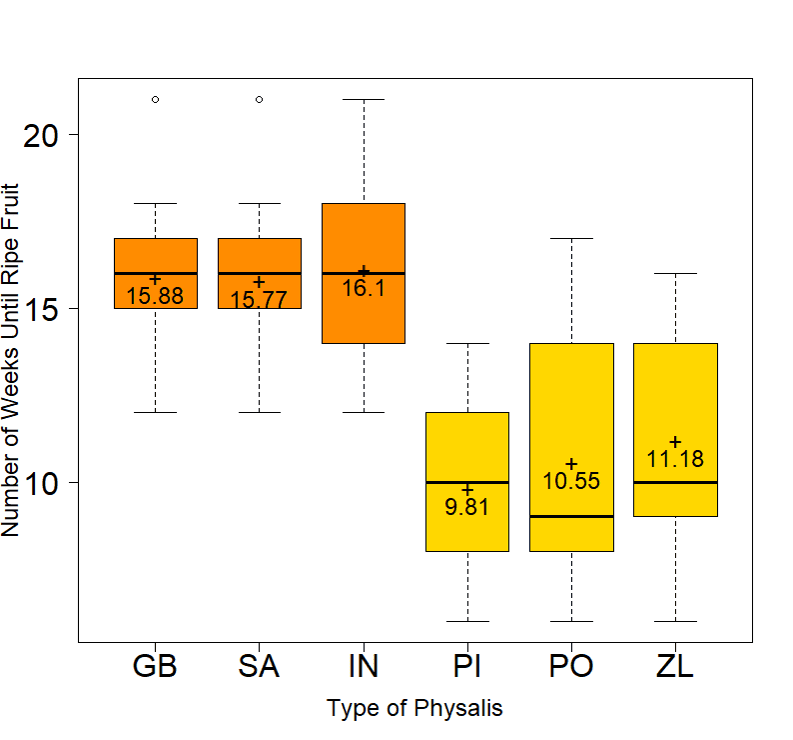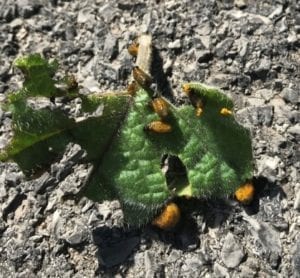Physalis Blog Post
2018 Project
2018 Physalis Improvement Project
As the first year of the Physalis Improvement Project comes to a close, we would like to take this opportunity to share a little about the citizen science project and some of the results.
Background
In the first iteration of the project, citizen scientists were recruited to grow groundcherry and goldenberry in their home gardens or farms. Participants could grow up to three types of groundcherry (PO, ZL, PI), and three types of goldenberry (SA, IN, GB). In total we had 20 home gardeners, 11 NYS farmers, and three community partners (Ithaca Children’s Garden, Cornell Botanical Gardens, and Cayuga Nature Center) who all volunteered to grow Physalis as citizen scientists.
Over the course of the growing season, participants were asked to record observations surrounding qualities such as growth habit, fruit production, flavor, and pest and disease incidence.

The types of groundcherry and goldenberry grown by our participants.
Growth Habit
There was no preference of growth habit between groundcherry and goldenberry. However many mentioned the need for more space and support when growing the plants. We recommend a spacing of at least three feet between plants. For those unfamiliar, groundcherries have a low-sprawling growth habit, while goldenberries grow upright. We recommend using some type of structural support when growing these plants such as stakes, tomato cages, or a trellis system.
On average, our growers reported that the groundcherries were ready for harvest about 11 weeks after transplanting, while goldenberries were ready at about 16 weeks (see figure below). When asked to rank fruit production, respondents overwhelmingly found that groundcherry plants produced more fruit than goldenberry. The longer growing season needed by goldenberry resulted in some of our growers unable to harvest ripe fruit before frost.

Boxplots representing the number of weeks after transplant that ripe fruit was observed. The mean values of each type are provided.
Fruit Flavor
Both groundcherry and goldenberry flavor were well received by our participants. One aspect of goldenberry that was frequently highlighted was its unique flavor. For example, one respondent wrote “The flavors of SA and GB are really interesting! They sort of remind me of fruity Thai curry- SA has hints of coconut and GB is almost gingery”. It was also noted that in some instances the flavor of groundcherry was compromised by premature fruit drop before completely ripening, resulting in off-flavored berries. Overall, participants seemed to enjoy both types of fruit.
Pest and Disease Pressure
We found that pest pressure greatly varied between growing locations and that some pests preferred one species over the other. The three-lined potato beetle (see image of larvae below) and Heliothis subflexa (a Physalis specialist) affected mainly goldenberry, and flea beetles affected mainly groundcherry. We found that insect pest pressure occurred mainly in the beginning of the growing season before fruit set (with the exception of Heliothis subflexa, which burrowed into goldenberry fruit). However, once the fruit matured, multiple participants reported fruit being eaten by chipmunks or other animals. There were no major disease issues reported for either species.

Three-lined potato beetle larvae damage a goldenberry leaf.
Project Wrap-Up
Thanks to everyone who participated and followed along over the past year. This project would not have been possible without your support. Looking forward to this year!


